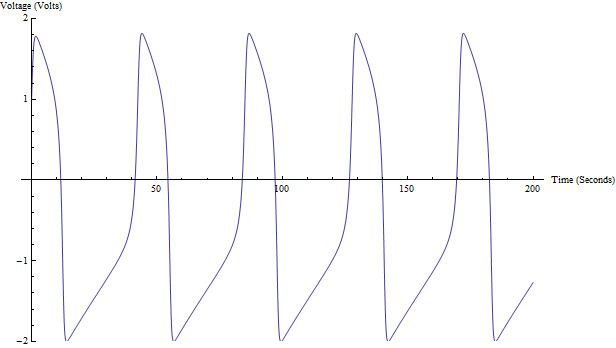 | ||
The FitzHugh–Nagumo model (FHN), named after Richard FitzHugh (1922 – 2007) who suggested the system in 1961 and J. Nagumo et al. who created the equivalent circuit the following year, describes a prototype of an excitable system (e.g., a neuron).
The FHN Model is an example of a relaxation oscillator because, if the external stimulus
This behaviour is typical for spike generations (a short, nonlinear elevation of membrane voltage
The equations for this dynamical system read
The dynamics of this system can be nicely described by zapping between the left and right branch of the cubic nullcline.
The FitzHugh–Nagumo model is a simplified version of the Hodgkin–Huxley model which models in a detailed manner activation and deactivation dynamics of a spiking neuron. In the original papers of FitzHugh, this model was called Bonhoeffer–van der Pol oscillator (named after Karl Friedrich Bonhoeffer and Balthasar van der Pol) because it contains the van der Pol oscillator as a special case for
